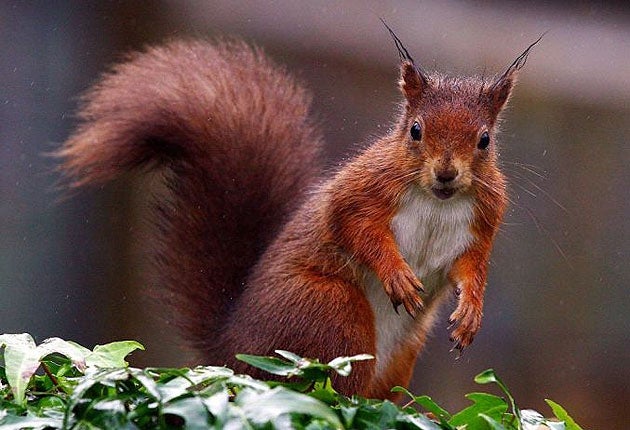Red squirrel ‘superhighway’ planned for ambitious rewilding project in Scotland
Woodland Trust in bid to raise £8m to buy estate in Wester Ross and restore woodlands, protect peat and boost biodiversity

Your support helps us to tell the story
From reproductive rights to climate change to Big Tech, The Independent is on the ground when the story is developing. Whether it's investigating the financials of Elon Musk's pro-Trump PAC or producing our latest documentary, 'The A Word', which shines a light on the American women fighting for reproductive rights, we know how important it is to parse out the facts from the messaging.
At such a critical moment in US history, we need reporters on the ground. Your donation allows us to keep sending journalists to speak to both sides of the story.
The Independent is trusted by Americans across the entire political spectrum. And unlike many other quality news outlets, we choose not to lock Americans out of our reporting and analysis with paywalls. We believe quality journalism should be available to everyone, paid for by those who can afford it.
Your support makes all the difference.A charity has launched a public appeal to raise £8m to buy an estate in Scotland’s Highlands, which it says can become a “red squirrel superhighway”.
Woodland Trust Scotland hopes the appeal will allow it to purchase the 4,500-acre Couldoran Estate in Wester Ross, and manage it for people and wildlife over the coming decades, allowing species such as the red squirrel to return.
The charity said at the moment the site is in poor condition, largely bare, with some areas of rhododendrons – an invasive species – and just a few trees clinging on in crags and ravines.
But if the charity is able to take possession of the land, it said it will manage it alongside its neighbouring site at Ben Shieldaig and will revive the land, allowing it to become a “squirrel superhighway” and allowing a range of other species to move freely between woods across the wider area.
The Trust said the land at Couldoran was once home to the rich woodland habitats which blanketed Scotland’s west coast until the modern era, and can be restored, with valuable peatlands – an essential carbon store – also being protected.
An initial assessment of the site suggested over 1,000 acres of new native woodland of Scots pine, aspen, downy birch, rowan, willow and alder could be created with the rest remaining open ground.
The Trust also said if it manages to purchase the land it would establish montane scrub species such as dwarf birch and dwarf willow which grow at high altitude to provide a fringe to the natural treeline.
A successful rewilding programme on this scale would allow a range of species, from lichens and mosses to butterflies and red squirrels to move more freely, avoiding fragmentation and isolation.
Woodland Trust Scotland director Alastair Seaman said: “Next door at Shieldaig we see birds such as golden eagle, peregrine, red throated diver, greenshank and golden plover.
“Pine martens, water voles, badgers, red squirrels and mountain hares have also been spotted.
“If we can improve canopy cover at Couldoran we expect to find many of these species moving in as their range and habitat improves and expands.
“Wildcats were in the area until the 1960s and we’ve heard of potential sightings more recently too. It’s exciting to think we might one day see the return of such a rare and endangered species.”
He added: “Beinn a Chait is one of the hills on the estate and the Gaelic name may reflect this, [as it means] “mountain of the wildcat."
The charity said it would consult with the local community so people could “have their say and get involved”, and said one of its core aims would be to improve public access into an area with “spectacular views, but which currently attracts few walkers”.
The creation of new habitats for red squirrels could be vital to their long-term survival.
Until humans brought and released the first grey squirrels in Britain in 1876, all the squirrels living on this island were red.
Within less than a century, red squirrels, which had numbered around 3.5 million were banished from the trees and now survive in a few pockets of the country, with as few as 120,000 individuals left, and just 15,000 of those in England, according to the Woodland Trust.
The grey squirrels impacted red squirrels on three counts. They brought a disease, a Parapoxvirus, which does not impact their health but can kill red squirrels.
They compete for food – in particular acorns – which grey squirrels can eat while they are still green, leaving none to ripen for red squirrels.
And they put stresses on red squirrels which make them highly unlikely to breed.
According to the Woodland Trust human impacts such as habitat destruction and road building have also impacted red squirrels.
Join our commenting forum
Join thought-provoking conversations, follow other Independent readers and see their replies
Comments